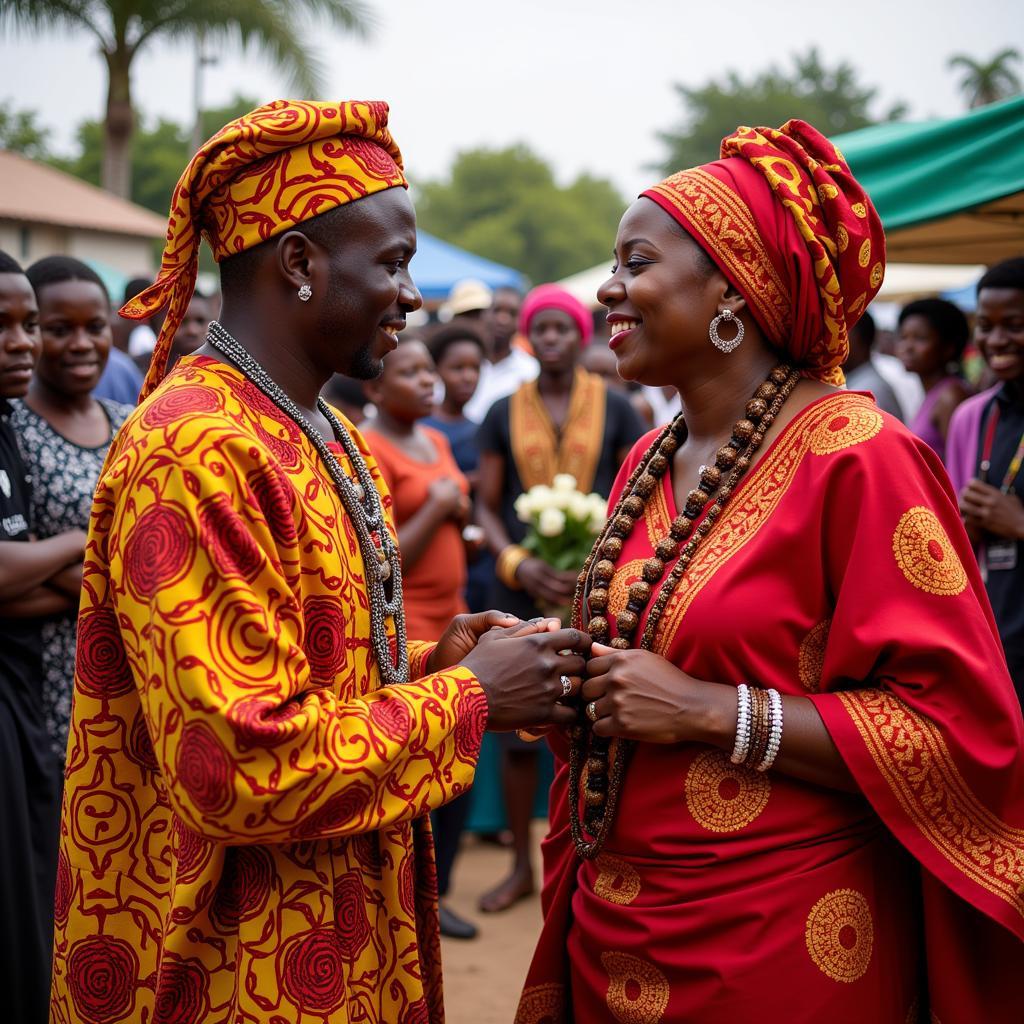Discovering the African Village in Gujarat
The African Village In Gujarat, India, offers a unique cultural experience, blending African heritage with the vibrant tapestry of Indian life. These communities, descendants of East Africans who migrated centuries ago, have preserved their ancestral traditions while integrating into the Indian social fabric. gujarat african village This article delves into the fascinating history, vibrant culture, and daily life within these unique communities.
A Journey Through Time: The History of the African Village
These African communities, often referred to as Siddis, trace their roots back to the 7th century, arriving in India through various routes – as traders, sailors, or unfortunately, as slaves. Their history is a testament to resilience and adaptation, creating a distinct cultural niche in Gujarat. They settled primarily in coastal regions like Jambur and Sirwan, forming tight-knit communities.
Over centuries, they integrated into Indian society while retaining their African heritage, a compelling blend reflected in their music, dance, and traditions. Their story is a compelling narrative of cultural exchange and survival, offering a unique perspective on the interconnectedness of global history.
The Rhythms of Life: Music and Dance in the African Village
Music and dance are integral to the cultural identity of the African village in Gujarat. The rhythmic beats of traditional African drums resonate through their celebrations, echoing their ancestral heritage. These vibrant expressions of culture offer a captivating glimpse into their rich history and the spirit of community.
Their dances, often performed during festivals and ceremonies, are a fusion of African and Indian influences, a testament to their cultural adaptation. The vibrant costumes and energetic movements create a spectacle of color and rhythm, showcasing the unique cultural blend that defines their identity.
Everyday Life: A Glimpse into the African Village
What is daily life like in an African village in Gujarat? The daily lives of the Siddis reflect a harmonious blend of their African heritage and their Indian environment. They engage in various occupations, from farming and fishing to crafts and trade, contributing to the local economy. Their homes, often adorned with intricate carvings and vibrant colors, reflect their unique aesthetic sensibilities.
Family and Community Bonds
Family and community ties are strong within these villages. Traditional social structures and customs play a significant role in shaping their lives, emphasizing collective responsibility and mutual support. These close-knit communities provide a sense of belonging and identity, fostering a strong social fabric.
Religious Practices
How do religious beliefs shape life in the African village? While many Siddis have adopted Islam or Hinduism, they often incorporate elements of their ancestral beliefs and practices into their religious observances. This syncretism reflects their adaptability and their respect for both their heritage and their adopted faith.
Preserving Heritage: Challenges and Opportunities
Like many minority communities, the African villages in Gujarat face challenges in preserving their unique cultural identity in a rapidly changing world. Globalization and modernization pose a threat to their traditional way of life, requiring them to adapt while safeguarding their heritage. However, increasing awareness and recognition of their cultural significance are creating opportunities for cultural tourism and economic empowerment.
Conclusion: The Enduring Legacy of the African Village in Gujarat
The African village in Gujarat stands as a testament to the enduring power of cultural resilience. These communities, with their rich history, vibrant traditions, and unique cultural blend, offer a captivating glimpse into the diverse tapestry of human experience. Their story is a reminder of the importance of preserving cultural heritage and celebrating the richness of human diversity.
FAQ
- Where are the African villages located in Gujarat? Primarily in coastal regions such as Jambur and Sirwan.
- What is the origin of the Siddi people? They are descendants of East Africans who migrated to India centuries ago.
- What are the main occupations of the Siddi people? Farming, fishing, crafts, and trade.
- What religions do the Siddis practice? Primarily Islam and Hinduism, often incorporating elements of their ancestral beliefs.
- What are some of the unique cultural expressions of the Siddis? Their music, dance, and traditional celebrations.
- How can I learn more about the African villages in Gujarat? Visit cultural centers, museums, and engage with local communities.
- What are the current challenges faced by the Siddi communities? Preserving their cultural identity in the face of globalization and modernization.
Dr. Anika Sharma, a renowned anthropologist specializing in African diaspora communities, notes, “The Siddis of Gujarat offer a remarkable example of cultural adaptation and resilience. Their story is a testament to the human capacity to preserve heritage while embracing new environments.”
Professor Omar Hassan, an expert in East African history, adds, “The cultural expressions of the Siddis, particularly their music and dance, provide valuable insights into the historical connections between Africa and India.”
For further assistance, contact us at Phone: +255768904061, Email: kaka.mag@gmail.com, or visit us at Mbarali DC Mawindi, Kangaga, Tanzania. We have a 24/7 customer service team.

